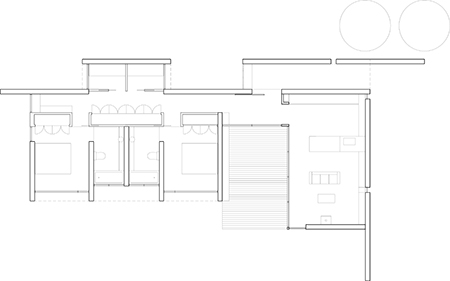- Events, Workshops and Programs
- Resources by Discipline
- Support and Resources by Topic
- FYiMaths NSW
- About the MESH team
- Contact the MESH team
- MESH Research
- Resources for Staff
Fractions and Decimals
Fractions and decimals appear everywhere in construction and design-related problems. Whenever one quantity is broken down into a number of smaller quantities (e.g. a wall width divided into three equally-long sub-widths), the resulting smaller quantities represent fractions of the original. Fractions can be whole numbers, but in practice they are usually numbers that lie `between' whole numbers -- such as $1.75$, for example, which lies three quarters of the way between $1$ and $2$. Measurements that cannot be expressed as whole numbers are conventionally written in decimal notation.
$$\newcommand{\ctext}[1]{\style{font-family:Arial}{\text{#1}}}$$
Example problem

Solution
Written as a fraction, the ensuite floor area divided by the bedroom floor area is given by
$$\frac{\ctext{ensuite floor area}}{\ctext{bedroom floor area}}=\frac{4.65\;\ctext{m}^2}{0.20\;\ctext{m}^2}=4.65\;\ctext{m}^2\div 10.20\;\ctext{m}^2\approx 0.46$$
The rule of thumb is a half ($\frac{1}{2}$ or $0.5$).
For further information see this page in Maths Start (vUWS login required)
Mobile options:

